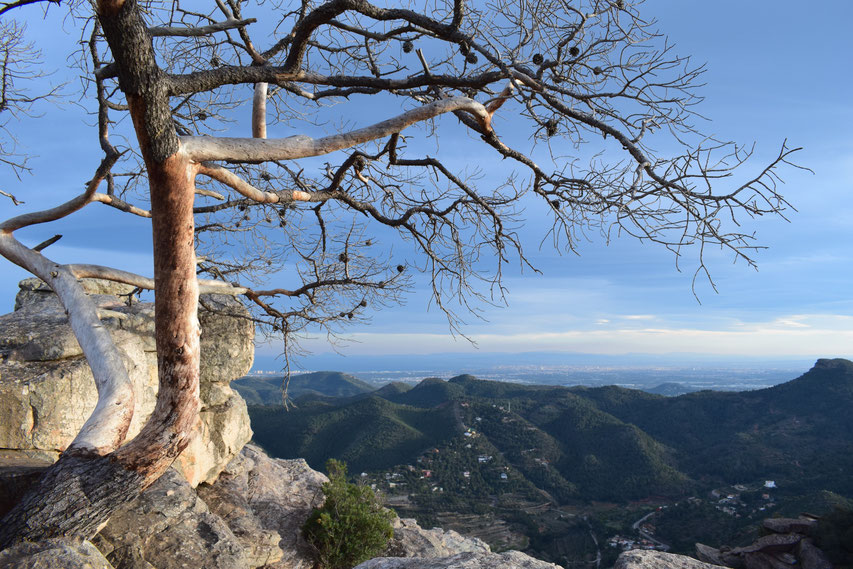
By now we thought we were getting a little better at travelling in the van. We were driving in little hops, poking into the countryside or along the coast for an hour or two each day, never waiting until after sunset to find somewhere to sleep. Water was easy enough to find from taps in children's play parks, fontes or town centres, fuel was cheaper in Spain and we knew just about Spanish to make our lives a little easier. Slowly but surely our body clocks began to adapt from a slovenly 11am until after midnight norm, to one which made better use of the light. With little to do in the evenings, we were sleeping before the majority of eight-year-olds and I often woke up just before dawn started to scratch through the curtains. We appeared to have escaped the winter.
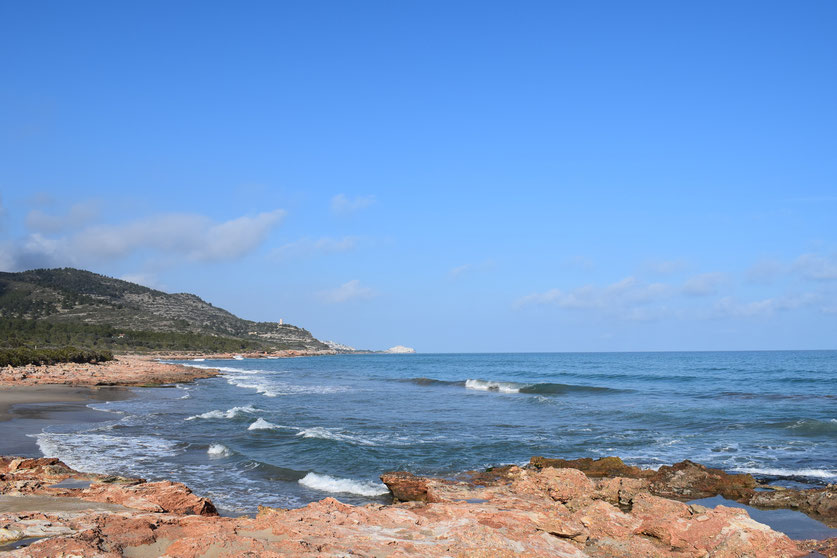
Passing through Peñíscola, and childishly mocking its name, we explored the cliffs and beaches of the Sierra d'Irta peninsular. Through the tide line was plagued by dead seaweed in places, the sea was a more pleasing shade of turquoise (one you might expect from the Mediterranean) than we had found it further North. Dan went swimming very briefly (it still wasn't very warm) and we stopped for the night beside Platja d'Irta, a beach composed of a million shells instead of sand. Spiky underfoot, I felt mild regret at treading on them and took care to avoid crushing the most elaborate. You shouldn't camp here, but we were getting cocky.


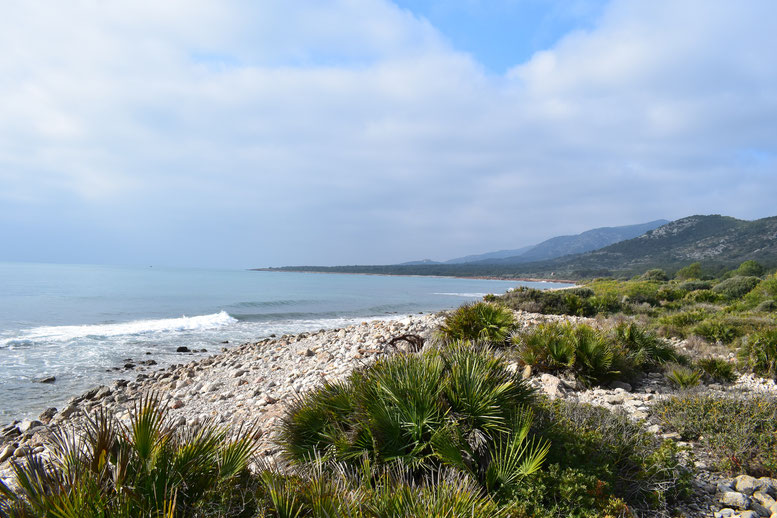

After all the skidding and skating around in the UK and Switzerland, it was becoming apparent that we could probably do with a new tire (only one thankfully as Rod, Dan's dad, had kindly bought us a new one to keep as a spare). Que much confusion and the true Spanish meaning of manjana. Passing the time until that mysterious point in the future, we trundled up to Montanejos on the hunt for more hot springs.
"Hot" would have been a vast exaggeration, but more or less the temperature of the swimming pool I spent much of my time at university in, it was comfortable enough for a leisurely breast stroke upstream through the steep sided canyon. Had the water not been so clear, we might not have noticed the schools of sardine sized fish following our feet.
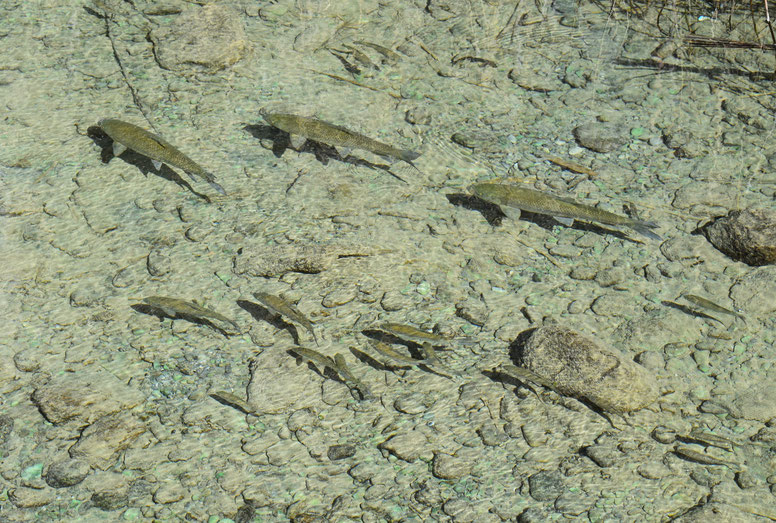
Optimistically returning for 1pm "a la manjana", we were told to wait for thirty minutes. After twenty, they were shortly retiring for a two hour lunch break and again we sold our souls to McDonalds in exchange for their wifi.
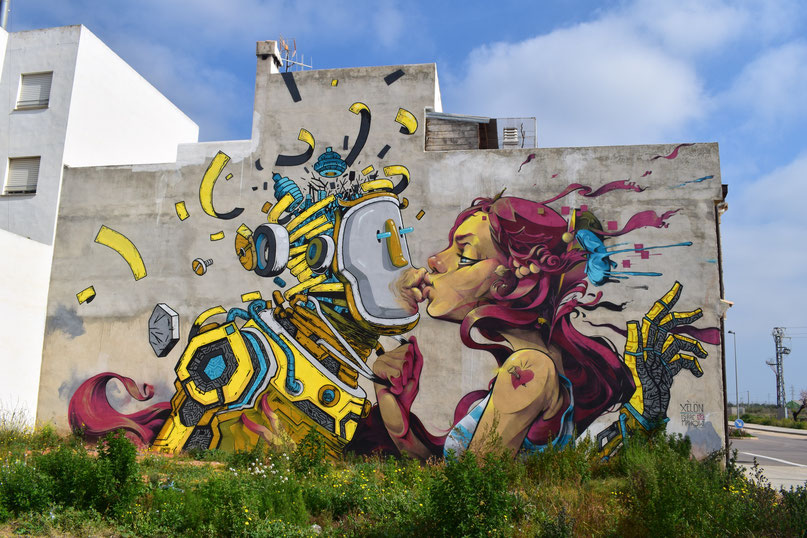


Eventually Burt was re-shod and we made it to sleep in Serra Calderona just before sunset. We trundled on towards the beach in the morning. Past Oliva the road was sporadically dotted with what I can only assume were "ladies of the night", though it was noon, posing on the roadside, herds of Lycra-clad cyclists and inexplicable quantities of white garden ornaments (wafting nymphs and lion gate guarders) for sale. The beach, with its "CODspicuous" fish and chip shop, had a lot more people in the elevated bars around the beach than anywhere near the sea itself which, when I went for a swim, gave me the disconcerting feeling of being on stage while they watched from the boxes. This might not have bothered me so much had I had any conventional form of swimming attire, but grandmother knickers and a bra as old as my boobs did not fill me with confidence. We had a minor argument, sat grumpily on the sand for half an hour and then bolted the way back we had come without stopping to regret the waste of fuel.
At Serra de Mariola we struck gold. Beside Lloma del Cavall, there is free camping, a stream and large barbecue sites for cooking. Being only early March, we were the only people staying there despite the sun and were left in solitude excluding occasional cyclists, groups of elderly hikers and one family who came for a barbecue. Rigging a bungee-rope/shoe-lace washing line, I could wash all our clothes without wasting any gas or drinking water, thus fighting off the inevitable complete descent into hippy squalor for another day. In the evening, we were serenaded by dozens of invisible frogs and eight peaceful hours later woke up to a particularly noisy dawn chorus.
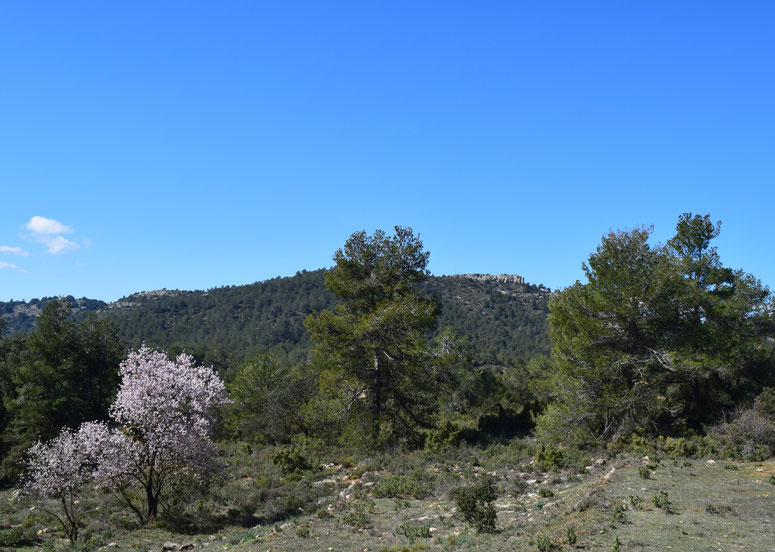

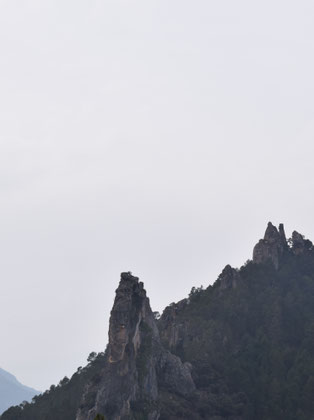
In the sunshine, bad weather seems almost inconceivable and we left our warm utopia in the promising direction of the much larger Sierras de Cazorla.
The enormous Emblase del Tranco de Beas was no doubt a very beautiful lake, but shrouded in rain so heavy we may as well have been driving under the outskirts of Niagra and with wind so strong that a tree was blown over ten meters away from our first parking spot, it was a little difficult to appreciate. We stayed one night, mildly worried by echos of thunder around the mountains.

Foolishly we fled to the Costa del Sol, a seemingly improbably place to be crushed by a tree or struck by lightening. The misty scenic route from Grenada to Olivar held our attention with its shaggy, saw toothed peaks and occasional unfortunate burnt out cars at the bottom of precipices or off the edges of particularly treacherous corners, until our fuel light popped red. We coasted downhill for an increasingly tense forty minutes until we came to a queue of hazard lights and turned the engine off entirely. Not knowing what had caused the hold up, it would have been distinctly wrong to feel inpatient, but after an almost silent twenty minutes of watching other people walk up and down to inspect around the corner, we were pleased to be directed around a broken-down lorry. Four more anxious minutes down the road there was a petrol station.
We found a relatively quiet headland along the Costa del Sol, though in general the coast was much as we should have expected and we didn't stay for long. Besides, the weather was still a little grim.
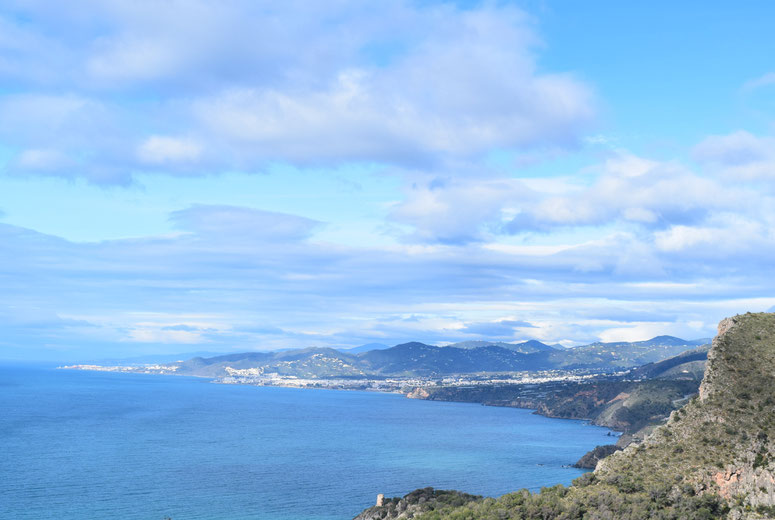
We charged on North West now, running from the weather which pluagued us with rain, mist and dense cloud through Sierra de las Nieves and up to the lake near Zahara, where we got stuck in mud for a good half an hour in what had at first seemed like a promising place to sleep. Zahara itself is nestled in the crook of two peaks, the smallest of which has a castle on it, but it was still raining and though I now had a crashing headache (probably from too much time in the van), we travelled further into Sierra de Grazalema in search of somewhere less sticky.


Just before Villaluenga de Rosario, we found a fairy grotto picnic spot to park beside. There were gnarled ancient olive trees, covered in moss and lichens, a babbling stream and, only once the clouds had cleared in the morning, we could see the huge rocky outcrop above. Swooping birds overhead turned out to be Griffon Vultures, which the area is famous for.
In Villaluenga del Rosario, we accidentally invested in eight euros worth of award winning, semi-cured goat and sheep's cheese. As soon as we entered the minuscule shop, it was inevitable; this was only a quarter of a wheel, so we could have easily spent quadruple and been set of an eternity. I nearly had an uncontrollable giggling fit... Neither of us have ever been fans of goat's cheese and have never spent so much money on any one food item, but it's hard to feel guilty about supporting the local economy (I told myself). Along with the expensive cheese, which turned out to be like a slightly softer version of Parmesan and thankfully quite palatable (though less so after five days out of the fridge), this part of Spain is a very rewarding one to support. There are fresh oranges and lemons (if you have need of them), walnuts, many types of olives and different breads from town to town. All of these are much more affordable and conveniently delicious.
Now enjoying glorious sunshine, I promised myself not to take it for granted as we rambled around the tiny white town of Benaocaz. With remnants of Moorish buildings overlooking the mountains, orange trees growing in every available corner and lazy cats lounging under them as locals strolled about their business, only mildly curious about our scruffy materialisation, Benaocaz seemed to be the most idyllic settlement we'd come across since leaving the tiny hillside villages of Southern France.
Benaocaz, Benaocaz, Benaocaz...

We stumbled down the old Roman road towards Ubrique, now only accessible by foot, horse or possibly quad bike. Along with the vultures, there were herds of jangling goats, some cows, sheep and a friendly donkey.
The rain, at least, is good for farmers...
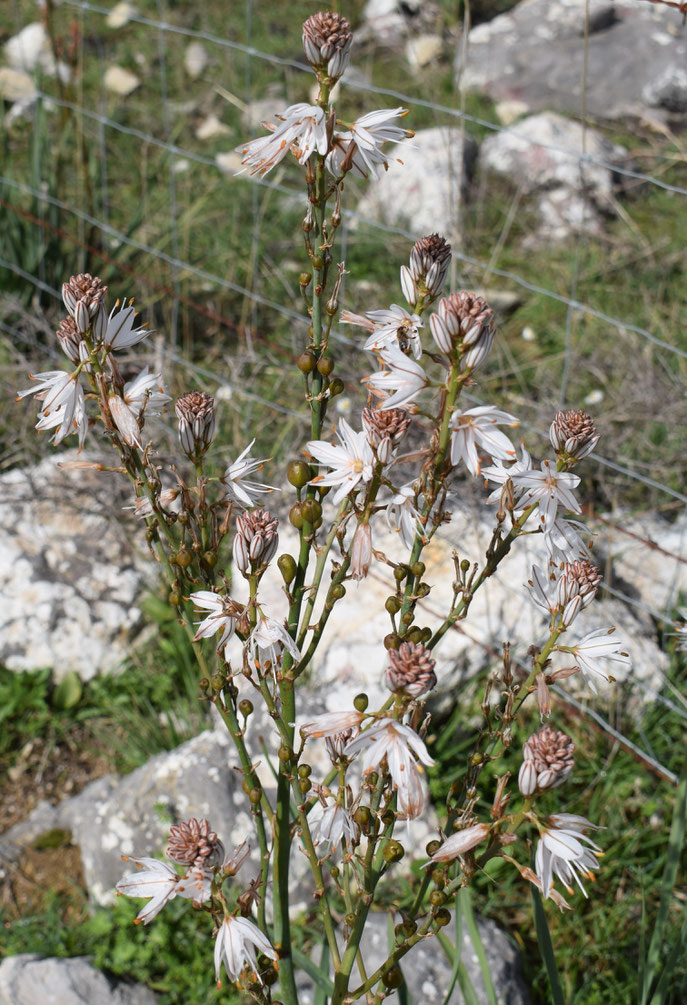
The Roman road and remains of their irrigation system.

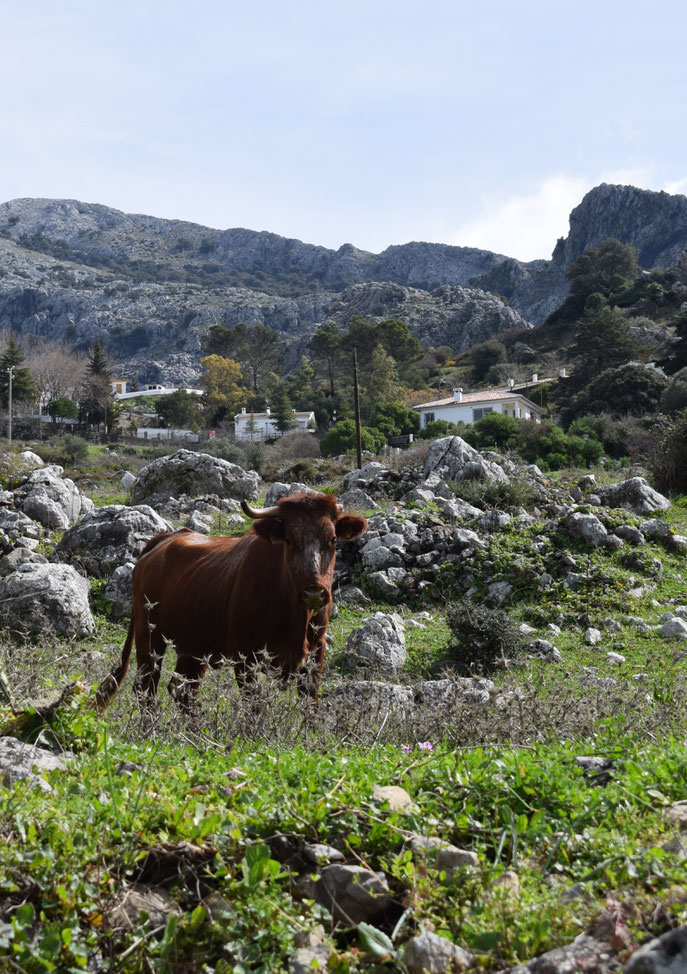
Previous segments of this journey...
- Take 2, step 1 - grazing through six countries.
- Burt is buried in snow -Morgins, Switzerland.
- France: a journey of three seasons and several lakes.
- Pantà de Rialb and the lost villages.
- The river Ebro & its tributaries, the Spanish Civil War and alternative uses for shoelaces.












